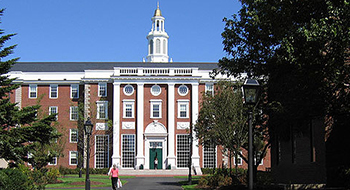

The $30.7-billion Harvard endowment has been one of the biggest and most high-profile users of exchange-traded funds (ETFs) in the world. And when it comes to emerging markets, the Ivy League investment firm has been a major leader, using ETFs to gain critical exposure to countries such as India, Brazil, the Philippines and Malaysia. But, according to the endowment fund’s latest 13F filing with the U.S. Securities and Exchange Commission, Harvard is paring its exposure to emerging markets with some big cuts to its ETF holdings. Yes, it still holds investments in about 20 different ETFs, but it has liquidated positions in some and made substantial cuts in others. The change follows a disappointing year for investment returns, with Harvard returning -0.05% in the fiscal year ended June 30, 2012.
A few notable reductions in the fourth quarter of 2012:
- iShares MSCI Chile Capped Investable Market Index Fund: -13%
- iShares MSCI Mexico Capped Investable Market Index Fund: -25%
- iShares MSCI Brazil Capped Index Fund: 8%
- iShares S&P Latin America 40 Index Fund: -100%
- iShares FTSE China 25 Index Fund: 44%
- WisdomTree India Earnings ETF: -100%
- iShares MSCI Poland Capped Investable Market Index Fund: -100%
- iShares MSCI South Asia Korea Index Fund: -18%
Harvard did use ETFs to express its views on other areas, showing interest in U.S. ETFs and dividends by adding investments in the iShares Core S&P 500 ETF, the iShares Russell 2000 Index Fund, as well as the Vanguard Dividend Appreciation ETF. The endowment also changed positions in resources and commodities, reducing exposure to the PowerShares DB Agriculture Fund and the PowerShares DB Energy Fund, and boosting positions in the PowerShares DB Base Metals Fund and the PowerShares DB Precious Metals Fund.
Read more about Harvard’s additions and cuts here.
